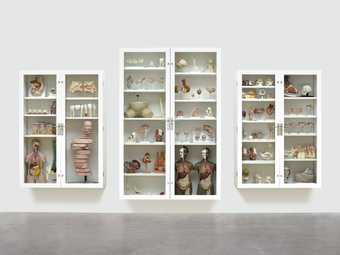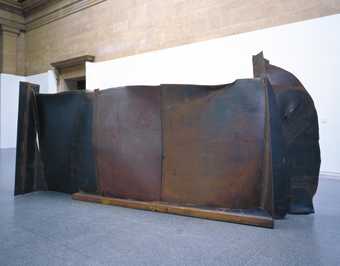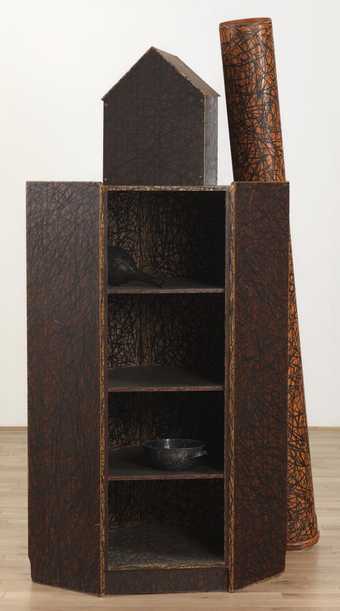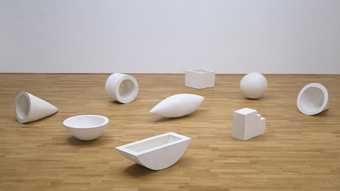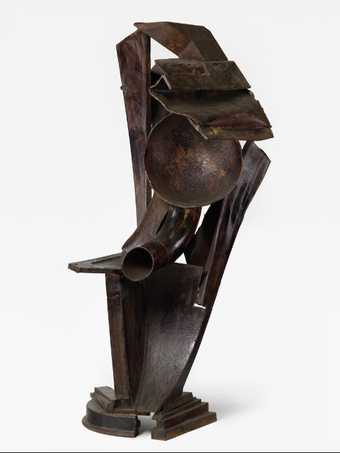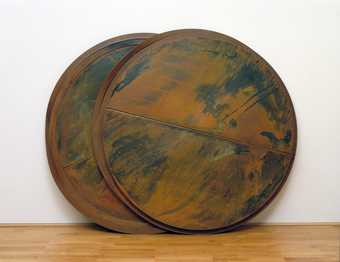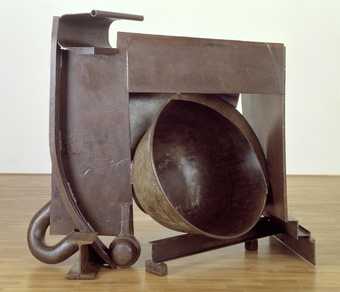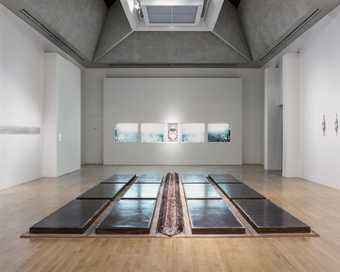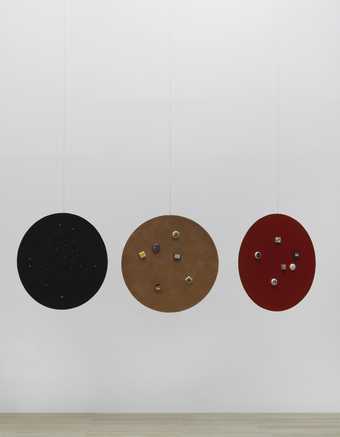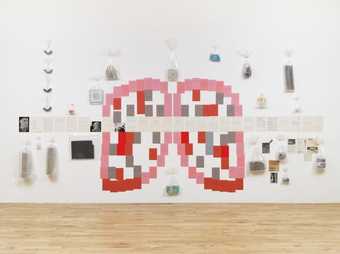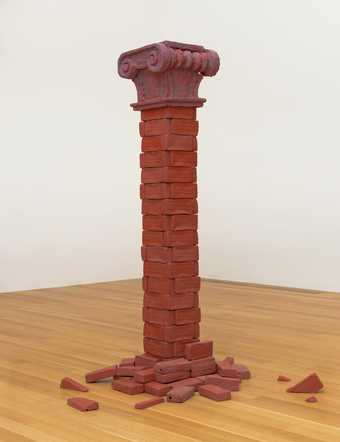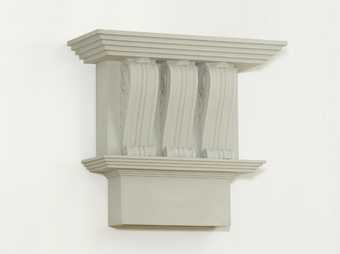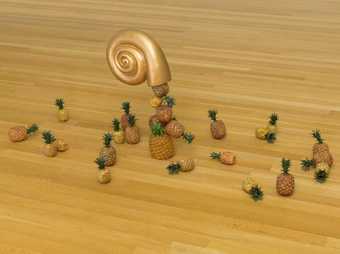Sorry, no image available
Not on display
- Artist
- Edward Allington 1951–2017
- Medium
- Terracotta, plastic and steel
- Dimensions
- Displayed: 1450 × 920 × 900 mm
- Collection
- Tate
- Acquisition
- Presented by the Weltkunst Foundation 1994
- Reference
- T06895
Summary
In Oblivion Penetrated, grapes, bananas and leaves cascade from an apparently unsupported cornucopia. The contents of this gilded horn of plenty spill out on the floor with a suggestion of glut and sensuality. Closer inspection reveals the fruit to be made of plastic, the decorative imitations of nature that one might expect to find in a shop window display. Their obviously ersatz status expresses Allington's enduring interest in questions about authenticity and imitation.
Such concerns point to the influence of the Greek philosopher, Plato (429-347 BC), whom Allington first read as a teenager. Plato proposed a distinction between the objects of sense perception - things that we see and touch - and universal, ideal forms of which they are an imperfect manifestation. All objects in the physical world are thus spurious and degraded copies of an authentic ideal form, unavailable to human perception. Allington later derided Plato as a 'cheat', and rejected the Platonic hierarchy of forms. His change of heart was prompted, in part, by a visit to Athens in the Summer of 1970. Having been fascinated by classical Greek culture since early childhood, Allington was shocked at what he found: 'the pride of Ancient Greece was available as the design on a tea-towel or in a plastic snow-storm.' Moreover, fibreglass replicas replaced the absent Parthenon marbles. In a 1983 interview, Allington said: 'As a holidaymaker I found it impossible to see the real Parthenon for the souvenirs and distorted depictions of it. Confusion about versions of the truth reared its head again. Finally I decided that the "real thing" just wasn't there.' (Quoted in Edward Allington 1984, p.26.)
Produced as part of a whole series of cornucopias overflowing with plastic paraphernalia, the flamboyant voluptuousness and vulgarity of Oblivion Penetrated can also be seen as a riposte to Allington's earlier sculpture, Ideal Standard Forms (Tate T05214). The ordered harmony of that piece alludes to the Apollonian aspect of classical Greece, whilst Oblivion Penetrated gives expression to its opposite, the Dionysian orgiastic impulse. In a 1984 interview, Allington said: 'Reading about [the cult of Dionysus] or gazing at dislocated fragments in museums, we can catch a glimpse of another way of living which was orgiastic and physical, almost bestial. What we need now is a new understanding of what was lost then.' (Quoted in Edward Allington 1984, p.27.)
Further reading:
Edward Allington, A Method for Sorting Cows: Essays 1993-97, Manchester 1997
Edward Allington: In Pursuit of Savage Luxury, exhibition catalogue, Midland Group Nottingham, 1984
Edward Allington: New Sculpture, exhibition catalogue, Riverside Studios, London, 1985
Helen Delaney
July 2001
Does this text contain inaccurate information or language that you feel we should improve or change? We would like to hear from you.
Display caption
This sculpture belongs to a group of works in which the artist employed plastic fruit, such as one might see on a greengrocer's market stall. The grapes and bananas appear to tumble to the ground from an unsupported golden shell which refers to the classical corncupia, or horn of plenty. However, the kitsch, plastic quality of the fruit can be read as an ironic comment on the dreams and illusions from which we construct our lives. The artist has written: 'I am showing you the dream, your dream; the cornucopia, paradise, the true life, the false dream, the fallen tower. Beautiful and glistening like all dreams but remaining a lie, an illusion wrought by artifice'.
Gallery label, August 2004
Does this text contain inaccurate information or language that you feel we should improve or change? We would like to hear from you.
You might like
-
Damien Hirst Trinity - Pharmacology, Physiology, Pathology
2000 -
Tim Scott Pool V
1971 -
Sir Anthony Caro Tundra
1975 -
Tony Cragg Mineral Vein
1986 -
Edward Allington Ideal Standard Forms
1980 -
Peter Hide Seated Figure
1988 -
Grenville Davey Ce & Ce
1989 -
Sir Anthony Caro The Soldier’s Tale
1983 -
Cathy De Monchaux Never forget the power of tears
1997 -
Elizabeth Wright B.S.A. Tour of Britain Racer Enlarged to 135%
1996–7 -
Li Yuan-chia Hanging Disc Toy
c.1980 -
Conrad Atkinson Asbestos
1978 -
Edward Allington Architectural Fragment / Third column
1986 -
Edward Allington Unsupported Support
1987 -
Edward Allington From the Birth of Paradise
1983

